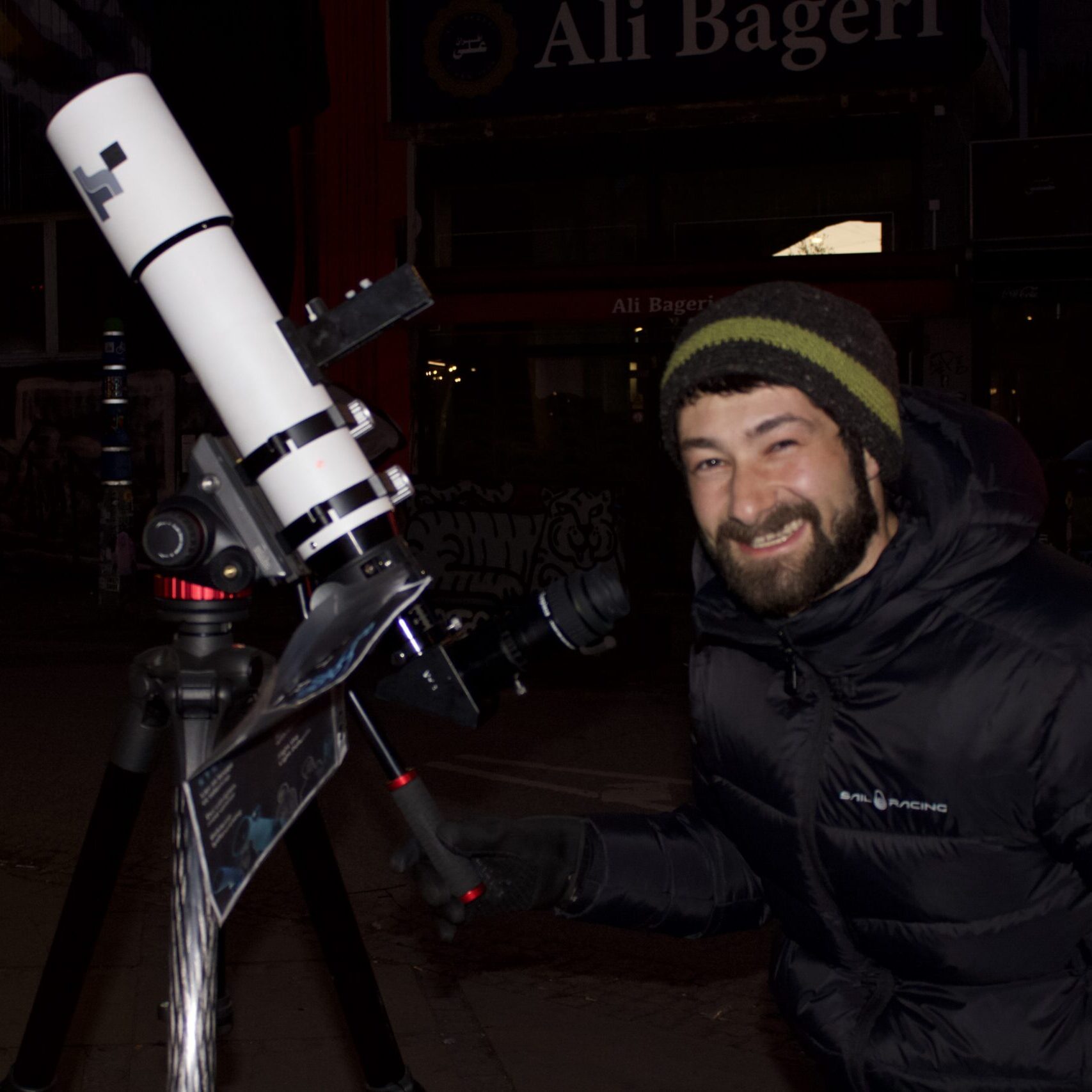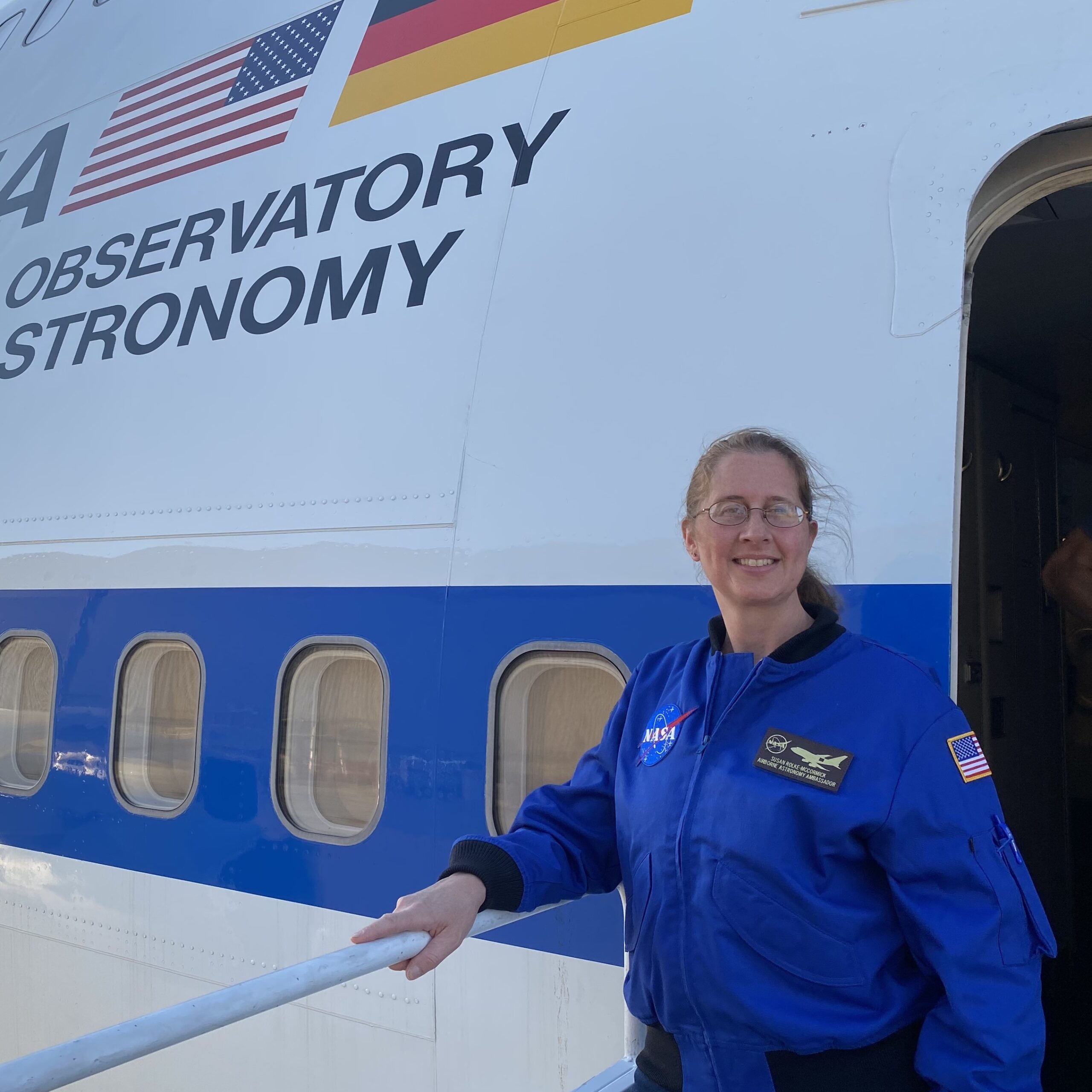Ambassadors
2024 Ambassadors
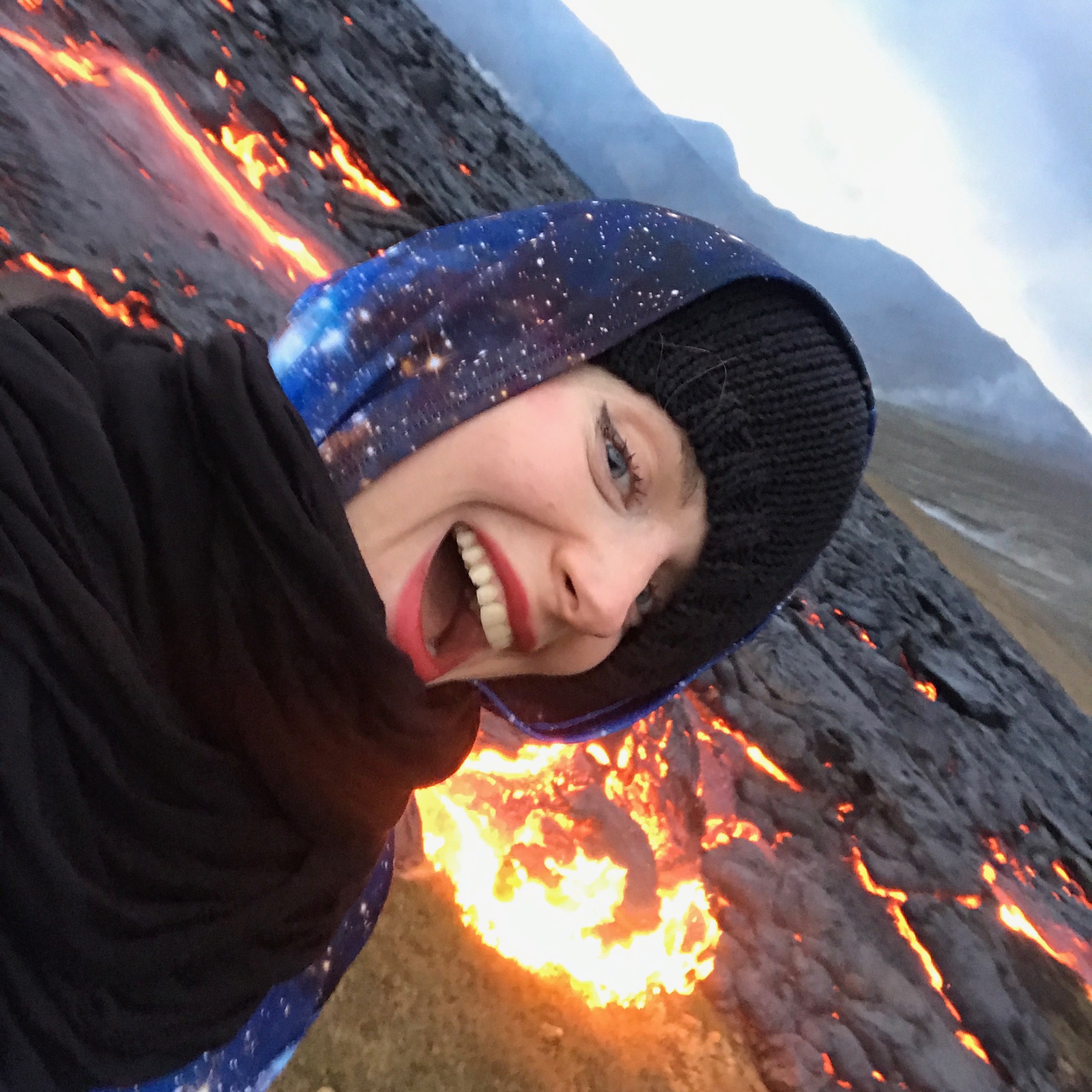
Laura-May Abron
Laura-May Abron is a French public astronomer, science communicator and artist from Paris. Despite growing up in the City of Light, space science has been the driving force in her life since she saw comet Hale-Bopp in 1997. She first studied music in Paris, then art at the University of London, before returning to school at the Paris Observatory to study astronomy and astrophysics. After a stint in Madrid, she moved to Los Angeles and began writing, producing and hosting multiple science shows. She currently works at the Griffith Observatory in Los Angeles, where she is a frequent contributor to the show “All Space Considered” and teaches on the long-running school program. Having been a solar observer for 15 years, she does frequent community outreach with a solar telescope to help others discover the wonders of our closest star. She is now returning to research. She will be an astronomer in residence at the Grand Canyon in 2025. She also uses art as a vehicle to communicate science through large-scale paintings, photography, music and poetry. In 2023, she became the first person to paint an active volcanic eruption in situ with lava. Her science art has been featured by NASA, Tate Modern, New Scientist, Spaceweather.com, astronomy books, galleries internationally and many more. In her free time, she chases tornadoes, auroras, volcanoes and eclipses.
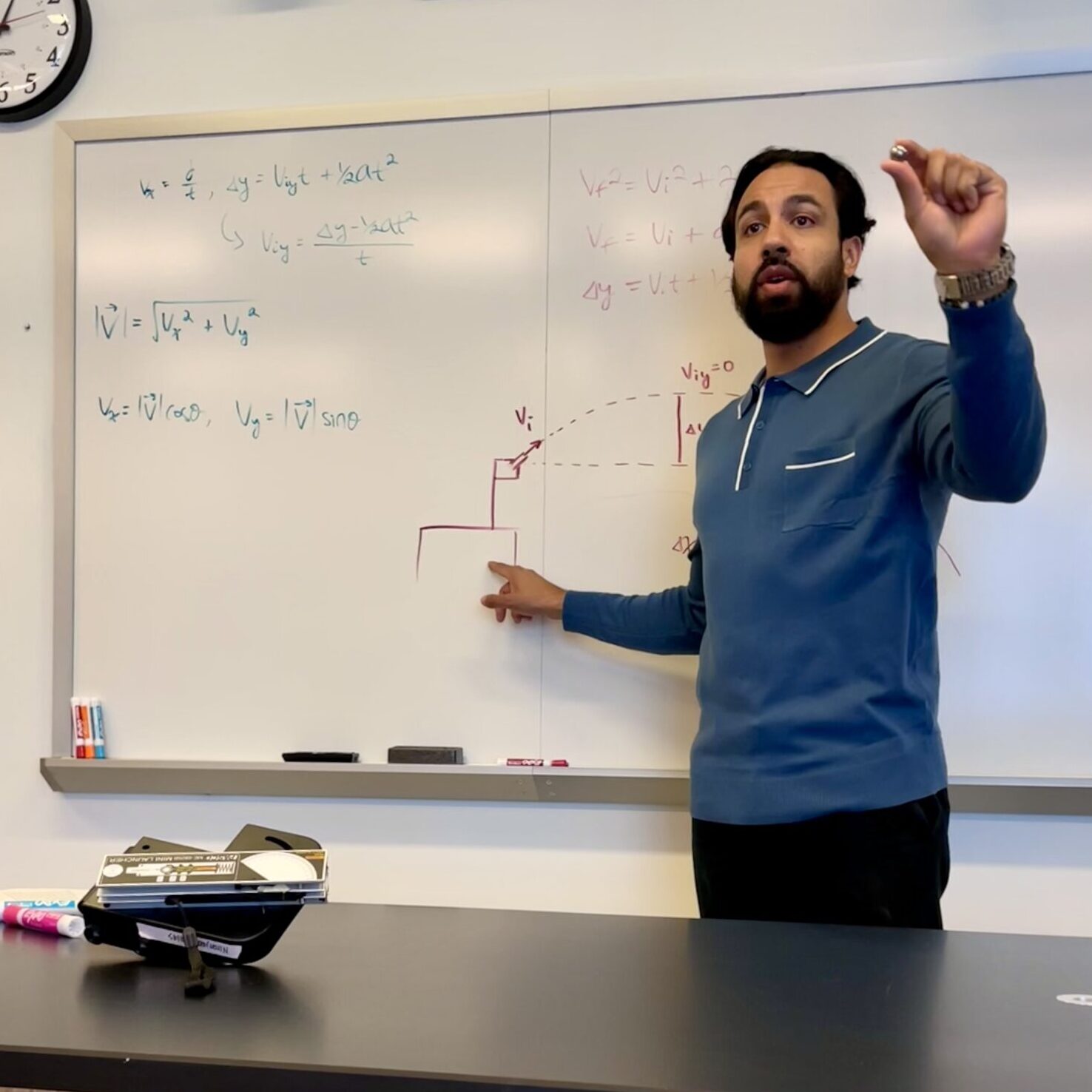
Jose Adorno
Jose Adorno is an enthusiastic and passionate science educator, who uses his love for astronomy to make meaningful connections with others. Born and raised in New York City, Jose remembers the elementary school trip to the American Museum of Natural History’s planetarium that launched him towards a career in science. Years later, he studied physics at CUNY Queens College, where he served as the Physics Club president, and simultaneously was involved in astrophysics research at the American Museum of Natural History. In his final year as an undergraduate, Jose’s application was selected for a 2.5-month summer research program in Germany, where he worked as an assistant science researcher at The Max Planck Institute for Gravitational Physics (Albert Einstein Institute) in Hannover. After earning his Bachelors of Science in Physics, and before graduate school, Jose worked as a full-time postbaccalaureate science researcher on gravitational wave astrophysics for the NASA Goddard Space Flight Center Maryland. During graduate school at the University of Miami, the opportunities to teach physics labs, tutor undergraduates and voluntarily organize astronomy observing events helped solidify Jose’s passion for science education. After completing his Masters of Science in Physics, Jose began a career in teaching on the high school level where he feels his experience and passion has the greatest impact. He currently teaches high school physics and middle school science in NYC, and has said he is “over the Moon” about joining ACEAP. During his free time, Jose enjoys visiting national parks to stargaze, loves playing music, and enjoys staying active playing basketball, going snowboarding and surfing.
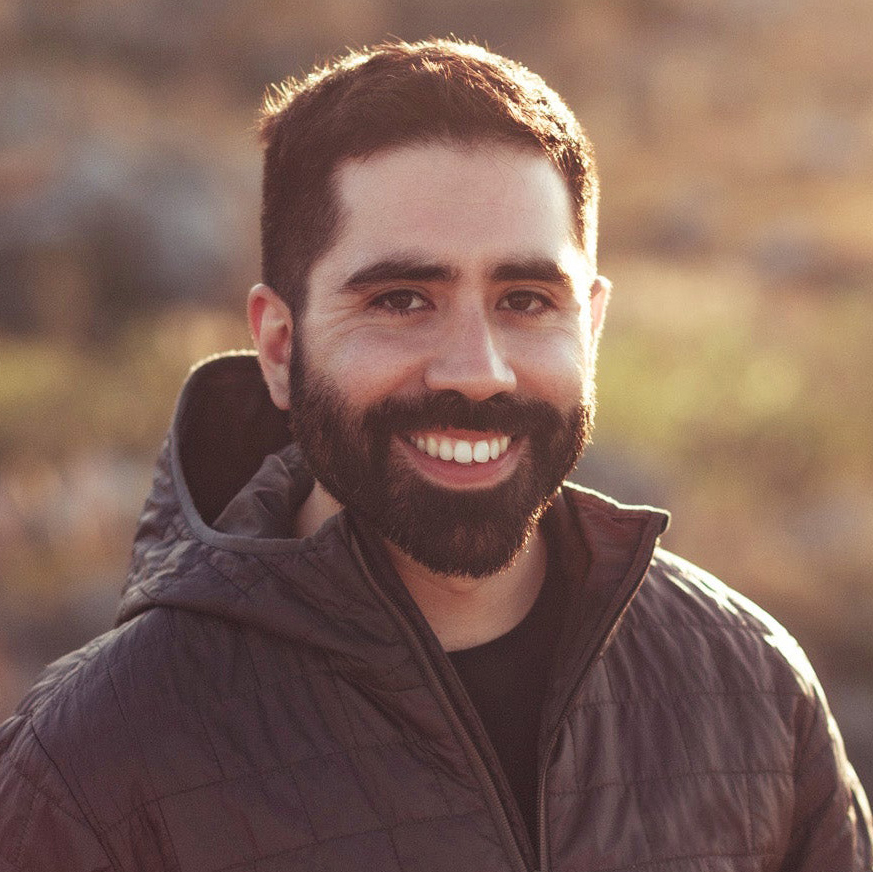
Federico “Fefo” Bouvier
Federico “Fefo” Bouvier is an Uruguayan photographer who specializes in landscape astrophotography, is an astronomy popularizer and a passionate defender of the night sky. His fascination with astronomy began in childhood, nurtured by telescopes, binoculars and astronomy books passed down from his grandfather, an optician with a keen interest in astronomy. With over a decade of experience, his work has been recognized by NASA, with his photos being selected as Astronomy Picture of the Day an impressive six times. Fefo’s initiative, “Mirá las estrellas” (Look at the Stars), was unprecedented in Uruguay. It identifies and documents the best publicly accessible stargazing spots in the country and has played a key role in boosting interest in astrotourism in Uruguay. He photographs these locations and writes about them, emphasizing their beauty and the crucial need to protect them from light pollution. This work has garnered support from the Ministries of Education and Culture and Tourism of Uruguay and attracted attention from national and international media.
Fefo has also studied the basics of astrophysics and cosmology at the Montevideo Planetarium, deepening his understanding of the universe he captures. He supports local dark-sky projects through his photography and communication efforts. Since April 2021, he has been an advocate for DarkSky International, with his work being featured on their website later that year.
A sought-after speaker, Fefo regularly presents at schools, universities and private events. His dedication to his craft recently earned him the distinction of being the first Uruguayan photographer to become a Sony Alpha Friend.
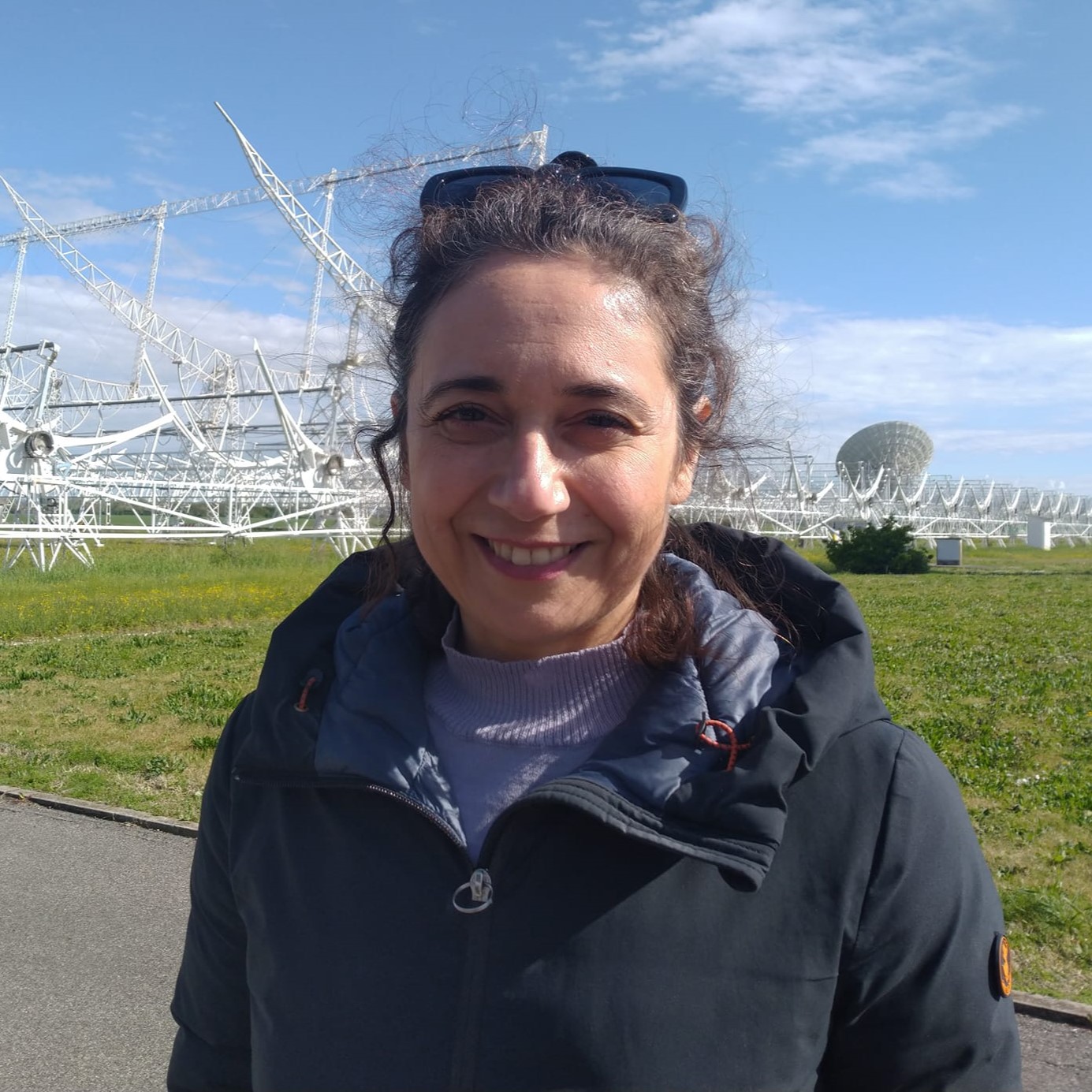
Daniela de Paulis
Daniela de Paulis is a media artist exhibiting internationally. She is also a licensed radio operator. Her artistic practice is informed by space and astronomy in their widest meaning. She is currently artist in residence at the SETI Institute (California) and artist in residence at the Green Bank Observatory (West Virginia), with the support of the Baruch Blumberg Fellowship in Astrobiology. For her projects, she is using state of the art radio telescopes, such as the Green Bank Telescope (West Virginia), the Allen Telescope Array (California), the Mullard Radio Astronomy Observatory (UK), the Medicina Radio Telescope and the Sardinia Radio Telescope (Italy). From 2010 to 2019, she collaborated with Astronomers Without Borders as the founder and director of the arts program. She is a corresponding member of the IAA (International Academy of Astronautics), a member of the IAA SETI (Search for Extraterrestrial Intelligence) Committee and a member of the IAA Moon Far Side Protection Committee. In addition to her artistic practice, she has published academic papers with the Leonardo MIT Journal, Routledge, Springer, Cambridge University Press, Oxford University Press, among others. She is part of the editorial board for the Springer Space and Society series. Her project “A Sign in Space” has been selected for the Billingham Cutting Edge Lecture at the International Astronautical Congress in 2022 and 2024, and has been featured by international media outlets, including The New York Times, CNN, CBC, ABC Australia, Wired, Scientific American, as well as radio and television programs. She is the winner of the Europlanet Prize for Public Engagement 2023, as a recognition to her long-standing work in communicating astronomy through her artistic projects. In November 2023, the International Astronomical Union named asteroid 52959 Danieladepaulis.
Bill Green
Bill Green is an optical engineer by day, and a street astronomer by night. In 2017, he took his telescope for the first time to South Street in Philadelphia to show people the moon. The public was shocked by what they saw. But why? Why have so few people looked through a telescope in their whole life?
Bill realized that by standing in the middle of a light polluted city, he could meet people outside the typical reach of science museums and universities. Don’t underestimate the element of surprise! He follows the tradition of John Dobson, taking telescopes out into the street and talking to whoever passes by. In collaboration with light designers, amateur astronomers, and community centers, the street astronomers educate the general public about light pollution and the universe.
To date, over 50.000 people have looked through his telescopes.
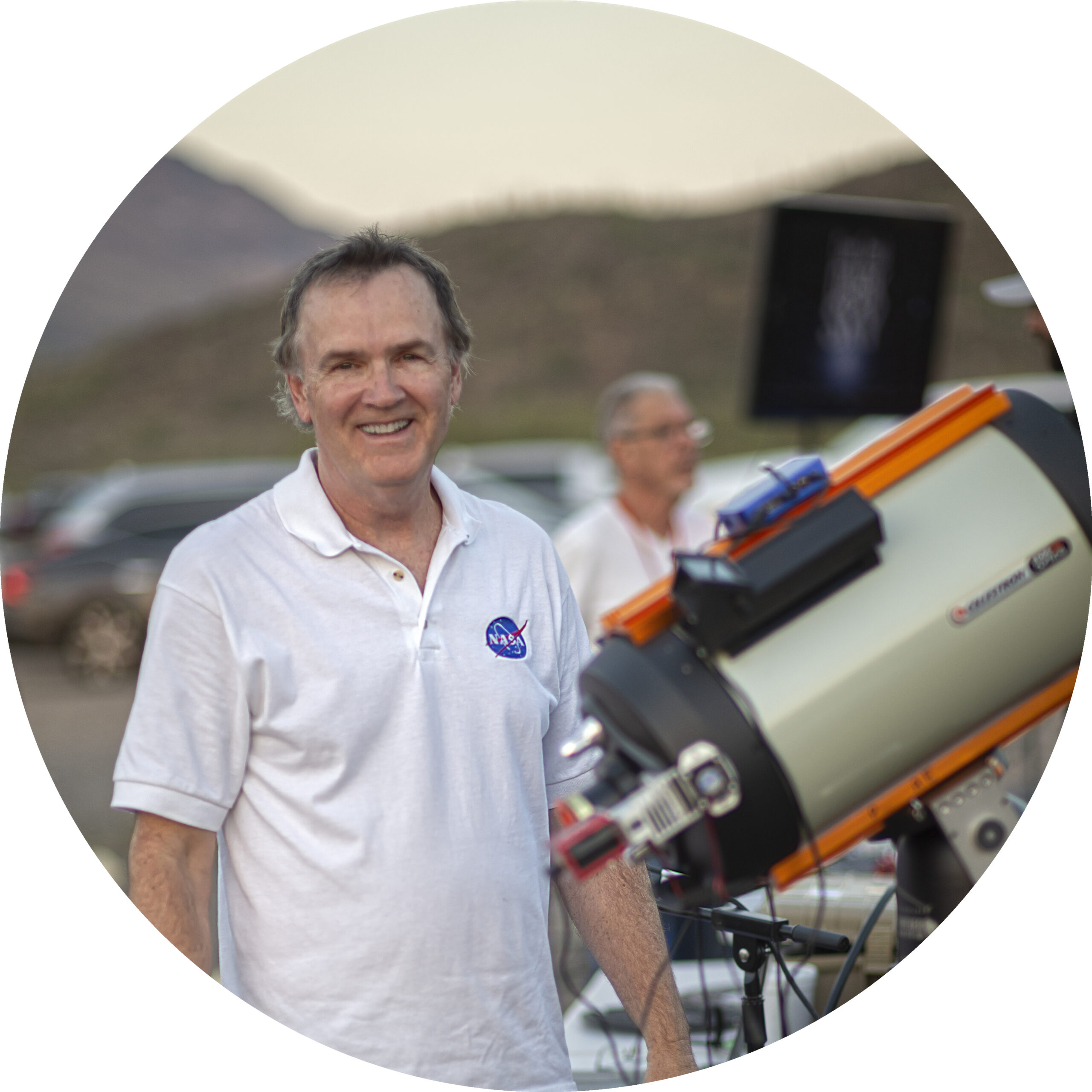
Mark Johnston
Mark Johnston has been fascinated with the night sky since he “discovered” Saturn with his first telescope at age 11. Mark is vice president of the Phoenix Astronomical Society, a NASA solar system ambassador, a member of the Percival Lowell Society and a Telescope.live tutor and ambassador. Mark is also a member of the Tucson Amateur Astronomy Association and the Night Sky Network, where he has earned an Exceptional Outreach award. He also earned a Master of Outreach from the Astronomical League. Based in Scottsdale, Arizona, Mark does over 100 astronomy outreach programs a year at schools, STEM camps, libraries and corporate facilities. He has done monthly astronomy programs for the City of Scottsdale for 20 years, and earned a special Environmental Awareness Award in 2007, Volunteer of the Year in 2008, and a Special Service Award in 2024 for his volunteer astronomy programs.
Mark is an avid astrophotographer and has imaged from ideal observing locations like the Grand Canyon, Haleakala and Namibia. His work won a NASA APOD in May 2023 and is often published in Sky & Telescope magazine, Astronomy Magazine, BBC’s Sky at Night magazine and on Space.com. Mark (@azastroguy) is very active on social media, where he posts daily astronomy-related content. Millions of people have seen his entertaining and educational posts on Instagram, TikTok, Facebook, YouTube and Threads.
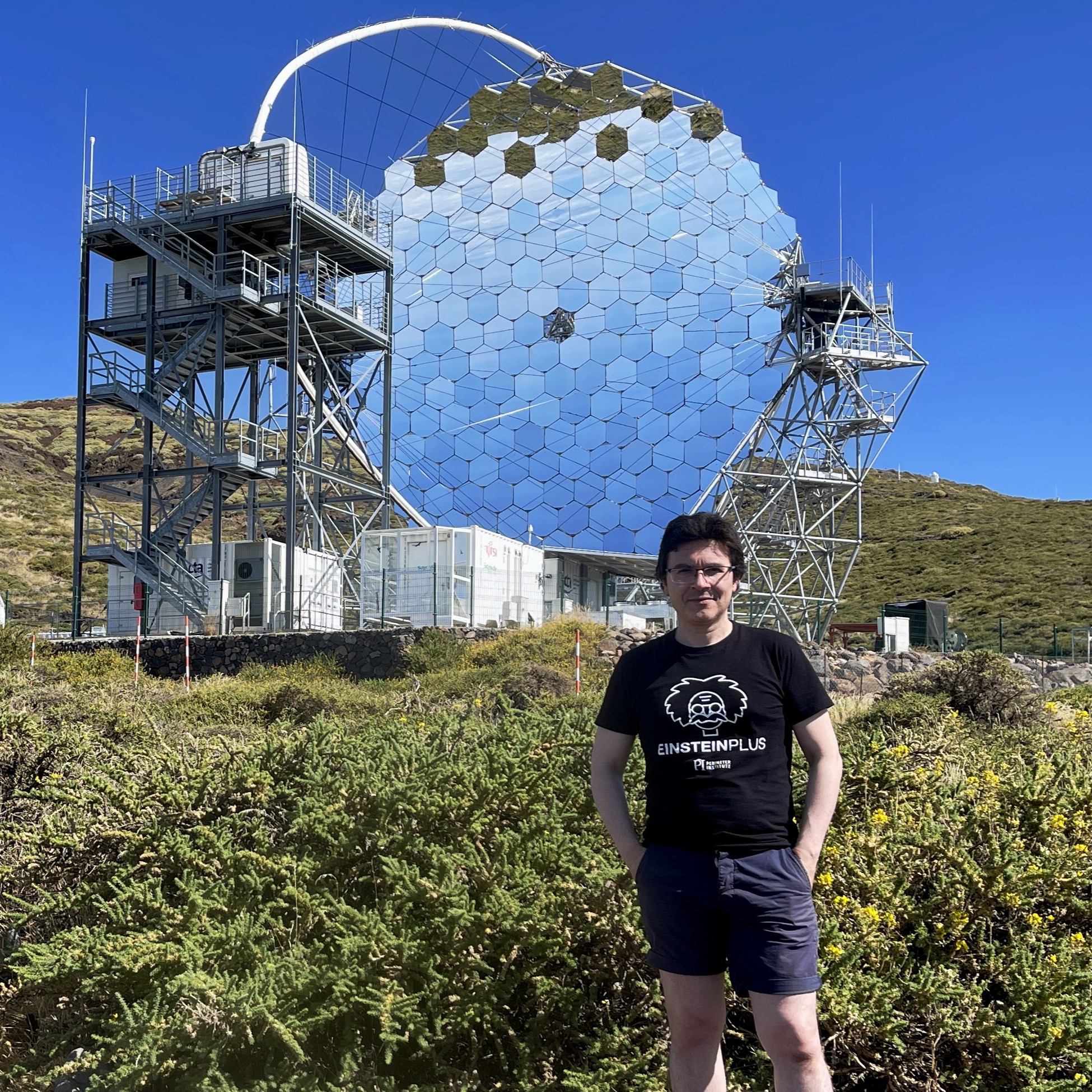
Moisés López Caeiro
As a kid, the contemplation of the Milky Way in the dark sky for the very first time was a riveting event in Moisés’ life, and he felt hooked forever. The inauguration of the first planetarium in his city, along with reading the book “Cosmos” by Carl Sagan, spurred his interest in astronomy. Very early on, Moisés decided to study physics, earning his degree and master’s degree in theoretical physics from the University of Santiago de Compostela, Spain.
As a high school science teacher, Moisés developed a strong commitment to physics, astronomy, technology and math education, mainly focused on 11-12th grades. He is devoted to scientific fairs, experimental designs and research projects. Moisés also prepares students for the Physics Olympiads. He develops computer simulation software for educational purposes, and created a website on physics, astronomy and mathematics called FisQuiMat.
Moisés was professor of physics at the summer scientific campus for high school students at hisUniversity. It involved high energy physics and astronomy based on CERN CMS and Pierre Auger Cosmic Ray workshops (experiments with cosmic ray detectors and data analysis from the observatory). Students worked with team project-based learning through inquiry, experimentation and discovery.
Moisés always trys to improve his science knowledge and teaching skills, which has led him to do international training programs for high school teachers on physics and astronomy in some of the best research centers in the world, such as CERN (Switzerland), LIGO Hanford (USA), Perimeter Institute (Canada), ITER – International Thermonuclear Experimental Reactor (France) and IAC – Canary Islands Astrophysics Institute (Spain).
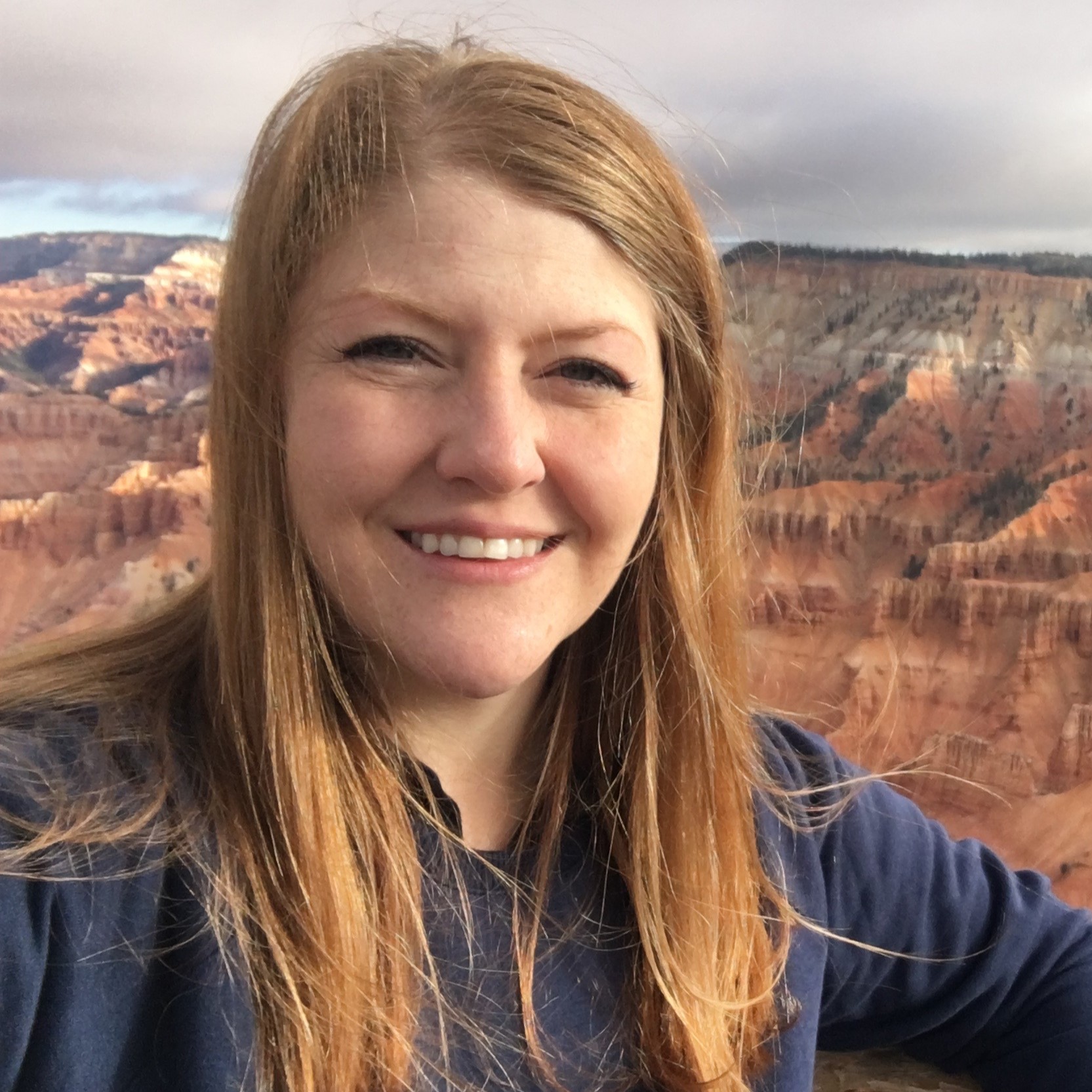
Amy C. Oliver
Amy C. Oliver, FRAS aka Nerdy Astronomer, is director of Smithsonian STARS — Scientists Taking Astronomy to Rural Schools — a program of the Center for Astrophysics | Harvard & Smithsonian (CfA), public affairs officer and science center manager at CfA’s Fred Lawrence Whipple Observatory, and SkyNights presenter at University of Arizona’s Mount Lemmon SkyCenter. She previously served as public information and news manager for the National Science Foundation’s National Radio Astronomy Observatory (NRAO) and the Atacama Large Millimeter/submillimeter Array (ALMA) in North America, social media contractor for NSF’s NOIRLab, and associate marketing manager at Clark Planetarium.
Amy is passionate about bridging gaps in access to science learning opportunities. She became a NASA/JPL solar system ambassador in 2016 and created International Livestream Star Party and Lib(r)ations.
For the Smithsonian, she has developed multiple programs for underserved audiences, including Conexiones — tying Mexican culture to Southern Arizona’s observatories, Hablemos de Astronomía — elevating young Hispanic scientists, and Planetario del Viajero, planetarium programming for Hispanic and tribal youth.
As a scientist, Amy is principal scientific investigator of Dark SkyNet — a cross-border light pollution monitoring network — and Project GLOWworm, studying unexpected bioluminescence above 8,000 ft. She holds a Bachelor of Arts from University of Louisiana-Lafayette, Master of Science from University of Oklahoma and DEI certification from University of Wisconsin-Green Bay.
Amy was elected a Fellow of the Royal Astronomical Society in 2021, currently serves as Chair of the Tucson/Pima County Outdoor Lighting Code Committee, has published multiple articles and book chapters, and is a 2024 TEDx speaker.
Susan Rolke
Susan Rolke is a high school science teacher and an active member of Keene Amateur Astronomers (KAA). She loves to share her passion for astronomy and inspire others to look up at the night sky. She has led after school and summer astronomy programs for children. She has been instrumental in starting and supporting the development of astronomy classes at multiple high schools. As a NASA partner eclipse ambassador, she worked closely with members of the community, libraries in New Hampshire and Massachusetts, local schools, and university to provide education and assisted in organizing events for the April 2024 solar eclipse. At a young age, Susan was awestruck by the beauty of the night sky. Her love of the stars led her to pursue a B.S. in math and physics from Keene State College, and a Masters of Science Education from Montana State University. In 2015, she traveled to McDonald Observatory in Texas for professional development to learn about the telescopes in order to bring her experience back to her students. In 2020, Susan was selected to be a NASA airborne astronomy ambassador and had the opportunity to fly on two SOFIA research missions. The information she learned regarding multiwavelength astronomy during her immersive flight week in California she brought back to share with her students and community. She has been on several radio shows, spoken at a variety of forums, assists in hosting the club’s public star parties and is the editor of KAA’s monthly newsletter.
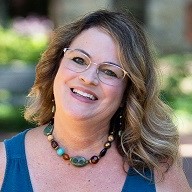
Deborah L. Skapik
Deb teaches physics and astronomy at Friends’ Central School and at St. Joseph’s University near Philadelphia. Her earliest memory of doing something astronomy related was creating a solar eclipse diorama out of a shoebox, perhaps for the October 1977 eclipse. Like a moth to a flame, she took to the field, joining her local astronomy club in Boonton, New Jersey, eagerly nerding out awaiting weekly episodes of Carl Sagan’s “Cosmos” on TV while her friends were busy watching MTV. At Swarthmore College, she majored in physics and astrophysics while working at the Sproul Observatory’s historic 24” refractor, using glass plates to photograph images of double stars and running open houses. She earned her Master of Science in astronomy from the Institute of Astronomy at the University of Hawai’i in 1994 and did doctoral studies of colliding galaxies in intermediate to high redshift clusters both there and at the University of Pennsylvania, lucky enough to spend many nights at many of the telescopes on Mauna Kea. Second only to her love for telescopes, Deb developed a passion for teaching astronomy to all ages. Deb served as the observatory supervisor at Williams College, and that is where she learned the importance of eclipse outreach from Jay Pasachoff, leading her first independent eclipse expedition to St. Kitts in 1998. Fast forward to 2022, and Deb published a book called, “Look UP, Below! An educator’s guide to the total eclipse of April 8, 2024”. Prior to this eclipse, Deb gave more than 25 public presentations and workshops at libraries and community centers from Indiana to Vermont as well as in her local community to spread eclipse literacy. Deb and her husband are brand new empty nesters, but she is filling her spare time officiating weddings, serving as a Lay Minister and making sourdough bread!

